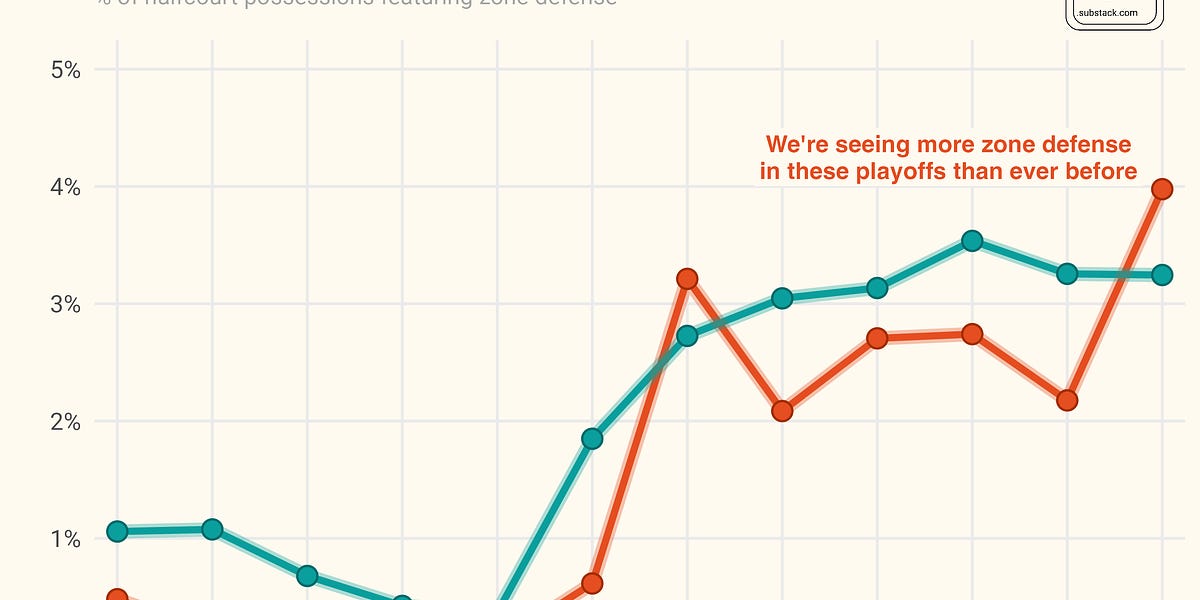- The NBA Librarian Weekly
- Posts
- The Real Game of Zones: Miles, Mismatches, and Mayhem
The Real Game of Zones: Miles, Mismatches, and Mayhem
Curating and Summarizing the Best NBA Content Every Week

Welcome to the NBA Librarian Weekly, where we curate and summarize the best NBA content of the week — all in under 1,000 words. I consume so you don’t have to.
I love the NBA playoffs because the game — and what you watch for — completely changes. It’s not just about who’s hot or stuffing the box score. It’s about the adjustments. The regular season rewards repetition. The playoffs reward adaptation — and the ability to stay in rhythm while everything around you shifts.
In today’s edition, I’m highlighting some of the best content I’ve seen on the tactical pivots shaping Round 2.
In Today's Edition:
Game of Zones is… Back?
Owen’s articles are always packed with insights.
Zone defense isn’t just a Heat thing anymore—it’s a full-on playoff trend. Denver’s gone from using it on 3% of halfcourt possessions in the regular season to 30% vs. OKC, including a wild 70% in Game 4.
Why? It messes with rhythm. OKC is iso-heavy (25th in passes per game), and zone collapses on drivers like SGA, forcing kickouts and hesitation. SGA’s TS% is down from 64% → 57%, Usage is down, Assist Rate up—he’s adjusting mid-series.
League-wide, teams score ~5 fewer points per 100 possessions vs. zone. It slashes rim attempts, dares you to shoot over the top, and slows decision-making. It’s not used often (<5% of all possessions), but when deployed right, it buys time, hides weak spots, and screws up flow.
📌 Bottom line: Not a magic trick, but a damn smart wrinkle—and it’s working just enough to spread.
Game of Zone is… Over?
This podcast is one game old, but still held up after the Pacers eliminated the Cavaliers in 5. If you’d listened before Game 5, you probably saw the writing on the wall—Indiana figured Cleveland out in Game 4, and Caitlin broke it all down better than anyone.
The Cavs’ 3-2 zone that disrupted them in Game 3?
Torched in Game 4. Indiana scored 1.917 points per possession against it (up from 0.696 the game prior). The fix: screen Mobley at the top, park Pascal in the middle as the hub, and shift Tyrese into more of a spatial decoy than a pure initiator. That unlocked crisp skip passes, high-low feeds, and relentless rim pressure.
They flipped the defense too—pressing with 3 defenders in the backcourt on 21 possessions, more than any playoff team in a single game. That heat led to 22 Cavs turnovers and dragged Cleveland’s average time to first action to 6.81 seconds, a glacial pace (27th percentile in regular season terms).
The Pacers were a much faster and physical team and Cleveland couldn’t keep up. Hot shooting? Sure. But this was structure, not luck.

